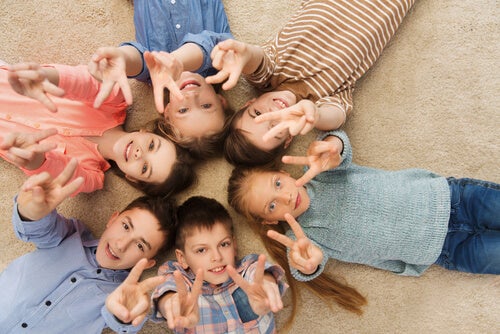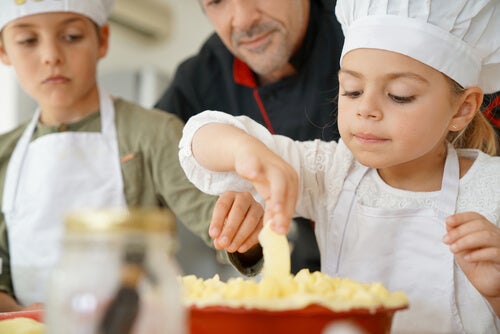Three Ways to Explain Peace to Children

Children are developing humans. As adults, educators, and parents, it’s our obligation to provide them with a safe and sensible world where they can grow securely and happily. With this in mind, let’s look at some resources to explain peace to children.
Peace is a concept that can seem strange to a child’s young mind. So how can you define it for them concretely? Perhaps it’s a state of social stability and balance. Or maybe something that arises when different groups work together harmoniously. Other experts consider it the absence of war, violence, and inequality.

Resources to explain the meaning of peace
A large part of society is very conscious of the benefits that a culture of peace gives to our coexistence. If we want things to stay this way, it’s important for children to internalize this, the sooner the better.
Peace is a guarantee of personal and social harmony. Through it, we create an environment for the prevention of violence and conflict resolution with tools such as dialogue.
If this peace education starts in the family and extends to school, we can raise balanced children and adolescents capable of overcoming emotional and social conflicts. We’ll establish a very valuable extinguisher when confronted with episodes of risk and violence, such as cyber-harassment and bullying.
To do this, all activities related to peace are very important. Educating about values is fundamental to keep advancing towards a more balanced and peaceful society.
“The most disadvantageous peace is better than the most just war.”
-Desiderius Erasmus Roterodamus-
Conflict theater
Children usually like to act things out and feel like they’re on stage. At home as much as in the classroom, you can set the stage for what’s called “conflict theater“.
For this activity, you improvise a simple scene and imagine a list of common conflicts among children. For example, a fight over a toy, the last snack having been eaten by an older sibling, or the disagreements between parents who have work to do and children who want to play.
Once you’ve imagined the conflict, it should be acted out on the (improvised) stage by a group of children to identify it. Once it’s identified, they’ll discuss and debate over the emotions the conflict has generated and about the best way to respond peacefully.
Symbolic cooking
Cooking can be an excellent resource to explain peace to children, as confrontations can arise when it’s time to decide how to cook something.
One way to do “symbolic cooking” is to organize the ingredients. For example, to make a cake, you need some ingredients and don’t need others. A different concept will be associated with each ingredient.
Here’s an example. To make a cake, you don’t use salt, so you’ll associate this product, for example, with the term “violence”. But you do use eggs, so associate this ingredient with the term “respect”. Continue this until you have a list of products, both used and unused.
Once you finish, you’ll invite the children to pick the elements that you’ll use to make a peace cake. That way, they’ll discover what the associated values are.

Reading stories
Here’s one more way to explain peace to children. Reading stories, both classic and modern, is a useful exercise in this case.
Once they’ve chosen a story, it’s a good idea to read it out loud so that everyone hears it. Afterward, you can start a discussion about it in which the children can give their opinions, analyze, and discover the values transmitted in the story.
All of these resources to explain peace to children are useful and necessary to create a peaceful world and a positive environment where they can develop happily and securely.
All cited sources were thoroughly reviewed by our team to ensure their quality, reliability, currency, and validity. The bibliography of this article was considered reliable and of academic or scientific accuracy.
Mayor Zaragoza F., (2013). Paz como cultura: fuentes y recursos de una pedagogía para la paz. España. Milenio.
This text is provided for informational purposes only and does not replace consultation with a professional. If in doubt, consult your specialist.








